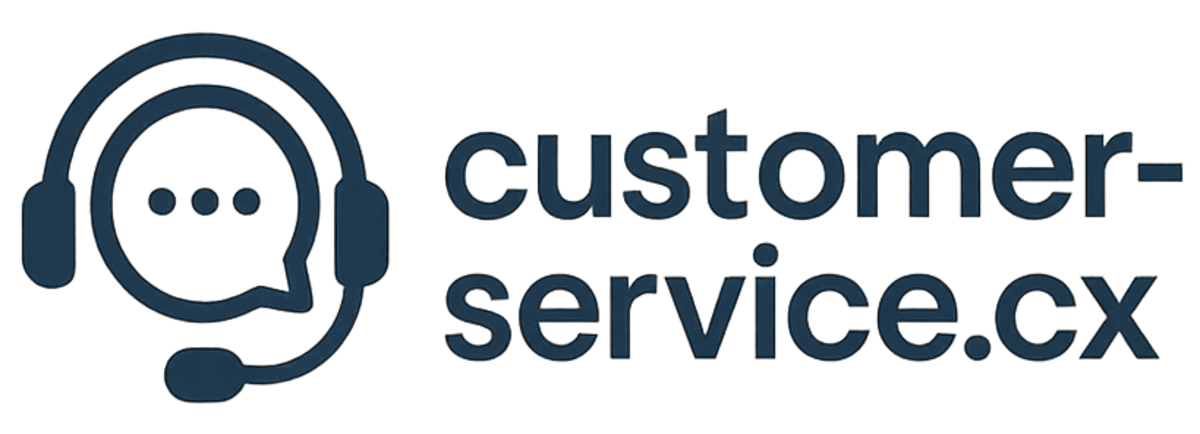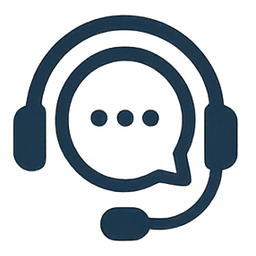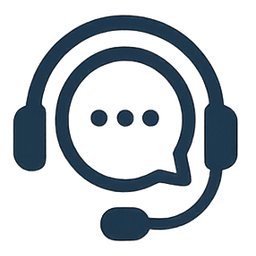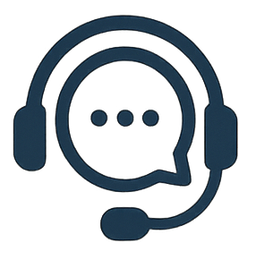The Importance of Solving Customer Problems in Software Companies
How Different Teams Contribute to Customer Problem-Solving
A well-planned customer service strategy involves multiple teams working together :
- Contact Center Agents: These are the first point of contact for customers. They directly interact with customers and gather important information about their needs and problems.
- Engineers: This team handles technical issues, fixes bugs, and implements new features based on user requirements.
- Product Managers: They analyze customer feedback, prioritize feature requests, and ensure that development efforts align with business goals.
- Marketing Teams: This team uses customer insights to create targeted campaigns and find opportunities for product growth.
The Power of Team Collaboration
The key to effective problem-solving is collaboration between these teams. When contact center agents notice a recurring issue, engineers can quickly address it. Product managers use this information to shape the product roadmap, while marketing teams leverage success stories to demonstrate value to potential customers.
The Impact of Solving Customer Problems
Your ability to solve customer problems directly affects user retention, brand reputation, and business growth. Companies that are good at problem-solving create loyal customers who become brand advocates, leading to sustainable success in the competitive software market.
Understanding Different Types of Customer Requests
Software companies receive three distinct types of customer requests, each requiring specific handling and resolution approaches:
1. Bug Reports
Bug reports are issues that need to be fixed in the software. They can include:
- System errors affecting functionality
- Performance issues impacting user experience
- Data inconsistencies or display problems
- Security vulnerabilities
2. Feature Requests
Feature requests are suggestions for improving the software or adding new features. They can include:
- New functionality suggestions
- Improvements to existing features
- Integration possibilities
- User interface enhancements
3. Upsell/Cross-sell Opportunities
Upsell and cross-sell opportunities are requests that indicate a customer's interest in upgrading their current plan or purchasing additional services. These requests can include:
- Requests exceeding current plan limitations
- Interest in premium features
- Need for additional services
- Capacity expansion requirements
How Modern Ticketing Systems Categorize Requests
Modern ticketing systems use sophisticated tagging mechanisms to categorize these requests effectively. Each ticket receives specific tags:
bug- for technical issues requiring engineering attentionfeature_request- for product enhancement suggestionsproduct_specific- unique tags related to particular product components
This categorization system enables teams to:
- Direct tickets to appropriate departments automatically
- Track issue frequency and patterns
- Set priority levels based on impact
- Generate data-driven insights for product development
- Measure resolution times per category
- Identify trending customer needs
The Benefits of Categorizing Customer Requests
Teams can quickly sort, filter, and analyze requests through these tags, leading to faster response times and more efficient resource allocation. The systematic approach helps maintain clear communication channels between support teams, engineering departments, and product managers.
1. Effectively Managing Bugs for Customer Satisfaction
Bug resolution requires quick action and smooth teamwork between engineering and support teams. When customers report bugs, a well-organized response system is put into motion:
Critical Bug Response
- Immediate escalation to engineering teams
- 24/7 response protocol for system-critical issues
- Direct communication channels between support and engineers
- Real-time status updates to affected customers
Non-Critical Bug Management
- Scheduled review within 48-72 hours
- Batch processing of similar issues
- Regular status check-ins with customers
- Prioritization based on impact scope
Engineering teams collaborate closely with customer support during bug testing phases. Support professionals provide real-world usage scenarios, customer impact data, and detailed reproduction steps. This partnership ensures thorough testing and validation before deploying fixes.
Bug Testing Collaboration
- Support teams verify fix effectiveness
- Engineers receive direct customer feedback
- Multiple testing environments
- Documentation of resolution steps
The bug tracking system keeps a clear record of issue status, assigned teams, and resolution timelines. Support agents use this information to give accurate updates to customers, maintaining transparency throughout the resolution process.
Each resolved bug goes through a final review to prevent similar issues and improve future product stability. This data is used in the development cycle, making the product more reliable and increasing customer satisfaction rates.

2. Prioritizing Feature Requests with Product Roadmap Alignment
Product managers conduct monthly reviews of feature request tickets to identify patterns and prioritize customer needs. Each request undergoes evaluation based on three key criteria:
- Practicality: Technical feasibility and resource requirements
- Frequency: Number of customers requesting similar functionality
- Revenue Potential: Direct impact on business growth and customer retention
The product management team balances these customer requests against company objectives through a structured scoring system. High-impact features that align with strategic goals receive priority status, while resource-intensive requests might be scheduled for later development cycles.
Resource Allocation Challenges
Product managers face the challenge of resource allocation across competing priorities. A typical prioritization matrix includes:
- Must-Have Features: Critical functionality affecting core product usage
- High-Impact Enhancements: Features requested by major clients or multiple users
- Nice-to-Have Additions: Improvements that enhance user experience
- Future Considerations: Ideas that require significant development resources
Keeping Internal Teams Aligned
Internal teams stay aligned through detailed product roadmaps shared via collaboration platforms. These roadmaps include:
- Quarterly development goals
- Release schedules
- Feature specifications
- Resource allocation plans
Teams receive regular updates through dedicated Slack channels and bi-weekly product sync meetings. This transparent communication ensures customer-facing teams can set accurate expectations and provide timely updates to users about requested features.
3. Using Customer Insights for Upselling and Cross-Selling Strategies
Customer feedback and feature requests are valuable resources for finding upsell and cross-sell opportunities. Your support team's direct interactions with customers reveal patterns in their needs, wants, and pain points.
Key Indicators for Sales Opportunities :
- Requests for advanced features beyond current subscription tier
- Multiple users asking for similar premium functionalities
- Integration needs with other software tools
- Storage or usage limit discussions
The marketing team plays a crucial role in turning these insights into revenue. They track leads generated from customer interactions through specialized tags in the ticketing system. Each potential upsell opportunity receives a unique identifier, allowing precise measurement of conversion rates and ROI from different types of customer requests.
Contact center agents need specific product knowledge to recognize and act on sales opportunities. You can empower your agents by:
- Providing detailed comparison charts of different subscription tiers
- Creating scripts for common upgrade scenarios
- Setting up automated alerts for usage threshold notifications
- Training on identifying cross-sell opportunities within product families
When agents understand the full scope of your product offerings, they can confidently present relevant upgrades to customers. This proactive approach turns potential feature request denials into positive conversations about enhanced solutions already available in premium tiers.
The marketing team analyzes these interactions to refine targeting strategies and improve conversion rates. They use data from successful upsells to create targeted campaigns and develop more effective sales enablement materials for the support team.

4. Creative Handling When Requests Can't Be Fulfilled Internally
Software companies face situations where customer requests clash with technical limitations or policy boundaries. The key lies in transforming these potential "no" moments into opportunities for alternative solutions.
Common Scenarios Where Internal Solutions Aren't Possible:
- Legacy system incompatibilities
- Resource-intensive customizations
- Regulatory compliance restrictions
- Core architecture limitations
- Policy-based constraints
Rather than leaving customers at a dead end, contact center agents can adopt a proactive approach by researching and suggesting third-party solutions. This strategy maintains customer relationships while demonstrating genuine commitment to solving their problems.
Best Practices for Alternative Solution Research :
- Research competitor offerings that might fill the gap
- Identify reliable third-party integrations
- Document successful alternative solutions for future reference
- Create a database of trusted external resources
- Stay updated on industry solutions
You might think sending customers to other companies sounds counterintuitive. The reality shows this approach builds trust and keeps communication channels open. Customers appreciate honesty and genuine effort to help - even if the solution comes from another provider.
Example Approach :
"While our software doesn't include this specific feature, I've researched some excellent alternatives that might work for you. Would you like me to share what I've found?"
This transparent approach preserves customer relationships and positions your company as a trusted advisor rather than just a service provider. Customers often return for other needs, remembering the helpful guidance they received.
5. Empowering Contact Center Agents Through Knowledge and Tools
Contact center agents need robust tools and knowledge to handle customer interactions effectively. A well-equipped agent can transform challenging situations into positive customer experiences.
Strategic Use of Macros
- Pre-approved response templates that avoid negative language
- Custom-built phrases focusing on solutions rather than limitations
- Dynamic text options that adapt to specific customer scenarios
The implementation of alternative language tools helps agents maintain professionalism while delivering potentially disappointing news. Instead of saying "We can't do that," agents can use phrases like "Here's what we can do for you" or "Let me show you a different approach that might work better."
Continuous Knowledge Enhancement
- Regular product training sessions
- Access to detailed documentation
- Real-time updates on software changes and limitations
- Hands-on experience with new features before release
Your agents become more confident and capable through systematic training on product capabilities and constraints. This deep understanding enables them to:
- Identify viable alternatives quickly
- Explain technical limitations clearly
- Suggest creative workarounds
- Connect customers with appropriate resources
A knowledgeable agent equipped with the right communication tools creates trust with customers. They can navigate complex conversations while maintaining a positive, solution-focused approach that aligns with your company's customer service goals.

Collaboration Across Teams to Solve Customer Problems Effectively
Cross-team collaboration creates a powerful ecosystem for addressing customer needs. Daily stand-ups, weekly sync meetings, and monthly review sessions bring together representatives from customer support, engineering, product, and marketing teams to share insights and align priorities.
Key Communication Channels :
- Dedicated Slack channels for real-time issue tracking
- Weekly email digests highlighting customer trends
- Shared dashboards displaying customer feedback metrics
- Cross-functional team meetings for strategic planning
The direct communication between support agents and engineers speeds up bug resolution times. Product managers gain valuable insights from support tickets to shape feature development. Marketing teams use customer feedback to refine messaging and identify new opportunities.
Impact of Collaborative Problem-Solving :
- Reduced response times for critical issues
- Better-informed product decisions
- Improved customer satisfaction scores
- Enhanced product documentation
- Streamlined internal processes
A shared knowledge base helps teams stay updated on product changes, customer needs, and company initiatives. Regular feedback loops between departments create opportunities for innovation and process improvement. Teams can identify patterns in customer behavior, anticipate future needs, and develop proactive solutions.
Cross-team collaboration breaks down silos and empowers each department to contribute their unique perspective to customer problem-solving. This unified approach ensures consistent messaging, efficient resource allocation, and better outcomes for customers.
Conclusion
Solving customer problems is more than just saying "yes" or "no" - it's about creating meaningful solutions that drive business growth. Companies that excel at this combine strategic problem-solving with genuine customer care, turning challenges into opportunities.
Your approach to managing bugs, feature requests, and sales opportunities shapes customer loyalty. By giving your teams the right tools, knowledge, and collaborative mindset, you can create a customer-centric culture that delivers results.
Key Success Factors:
- Empowered contact center agents who find creative solutions
- Cross-functional teams working in harmony
- Strategic prioritization of customer needs
- Willingness to recommend external solutions when needed
This comprehensive strategy doesn't just solve problems - it builds lasting relationships and drives sustainable business success.
FAQs (Frequently Asked Questions)
What are the key roles involved in solving customer problems in software companies ?
Effectively solving customer problems in software companies involves collaboration among contact center agents, engineers, product managers, and marketing teams. Each plays a crucial role in addressing customer needs through bug resolution, feature prioritization, and strategic upselling.
How are different types of customer requests categorized and managed ?
Customer requests are commonly categorized into bugs, feature requests, and upsell or cross-sell opportunities using tagging systems within ticketing software. This categorization helps prioritize issues and streamline resolution processes for better customer service outcomes.
What is the process for managing and resolving bugs to enhance customer satisfaction ?
Bugs are quickly addressed through close collaboration between engineers and customer support professionals during testing phases. Critical issues are escalated promptly while non-critical bugs follow a review timeline to ensure efficient resolution and maintain high customer satisfaction.
How do product managers prioritize feature requests effectively ?
Product managers conduct monthly reviews of feature request tickets, prioritizing them based on practicality, frequency, and potential revenue. They balance customer needs with company strategy and resource constraints, communicating prioritized features through product roadmaps to internal teams.
In what ways can customer insights be leveraged for upselling and cross-selling strategies ?
By analyzing customer feedback and feature requests, marketing teams identify upsell and cross-sell opportunities. They track leads generated from these insights and measure conversion rates while empowering contact center agents with knowledge to confidently offer relevant upsell options to customers.
How can contact center agents be empowered to handle customer problems more effectively ?
Agents are empowered by providing them with macros and alternative language tools to maintain professionalism without negative phrasing. Continuous training on product knowledge helps them understand limitations while offering helpful solutions, enhancing their ability to solve customer problems creatively.










